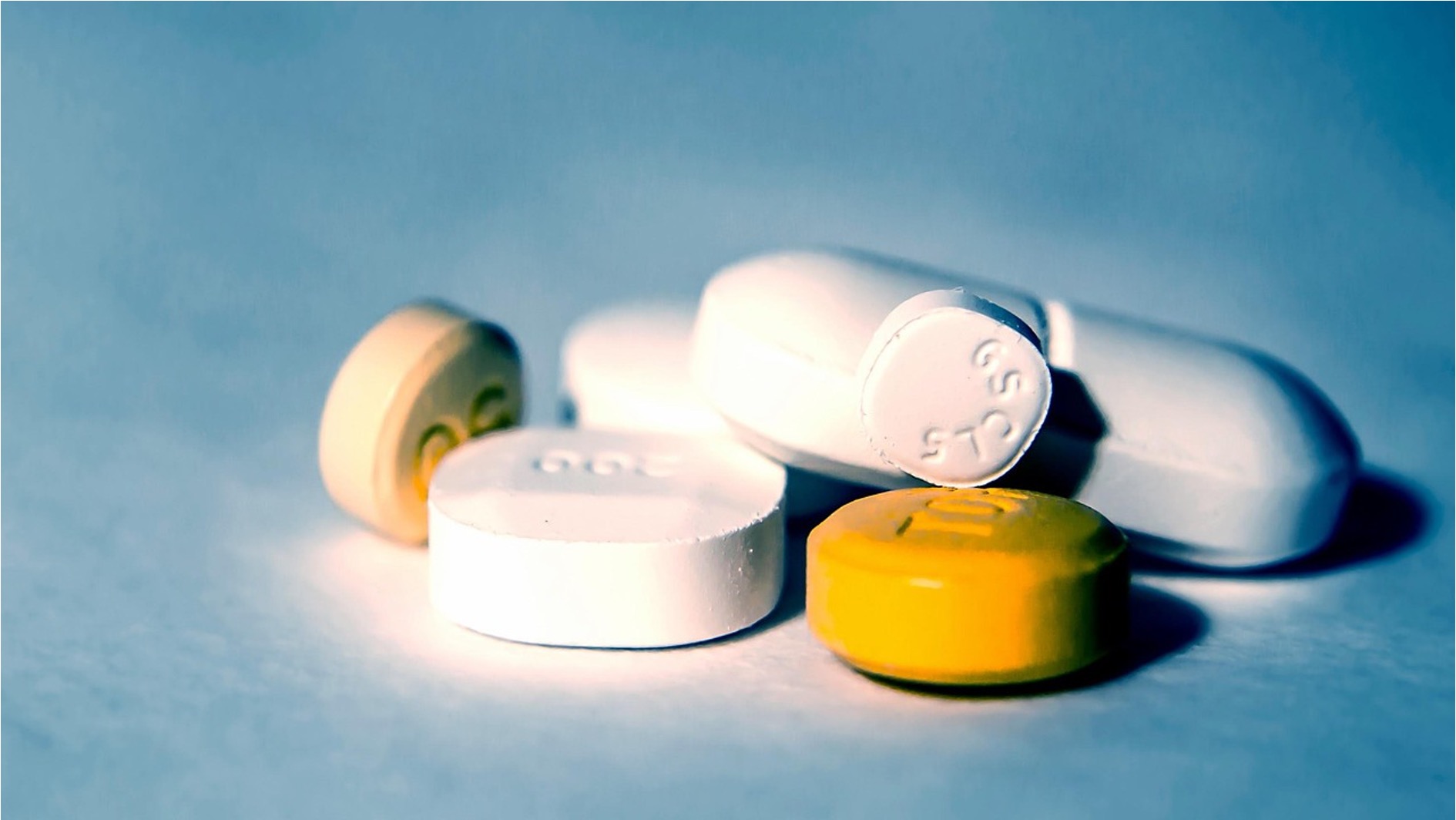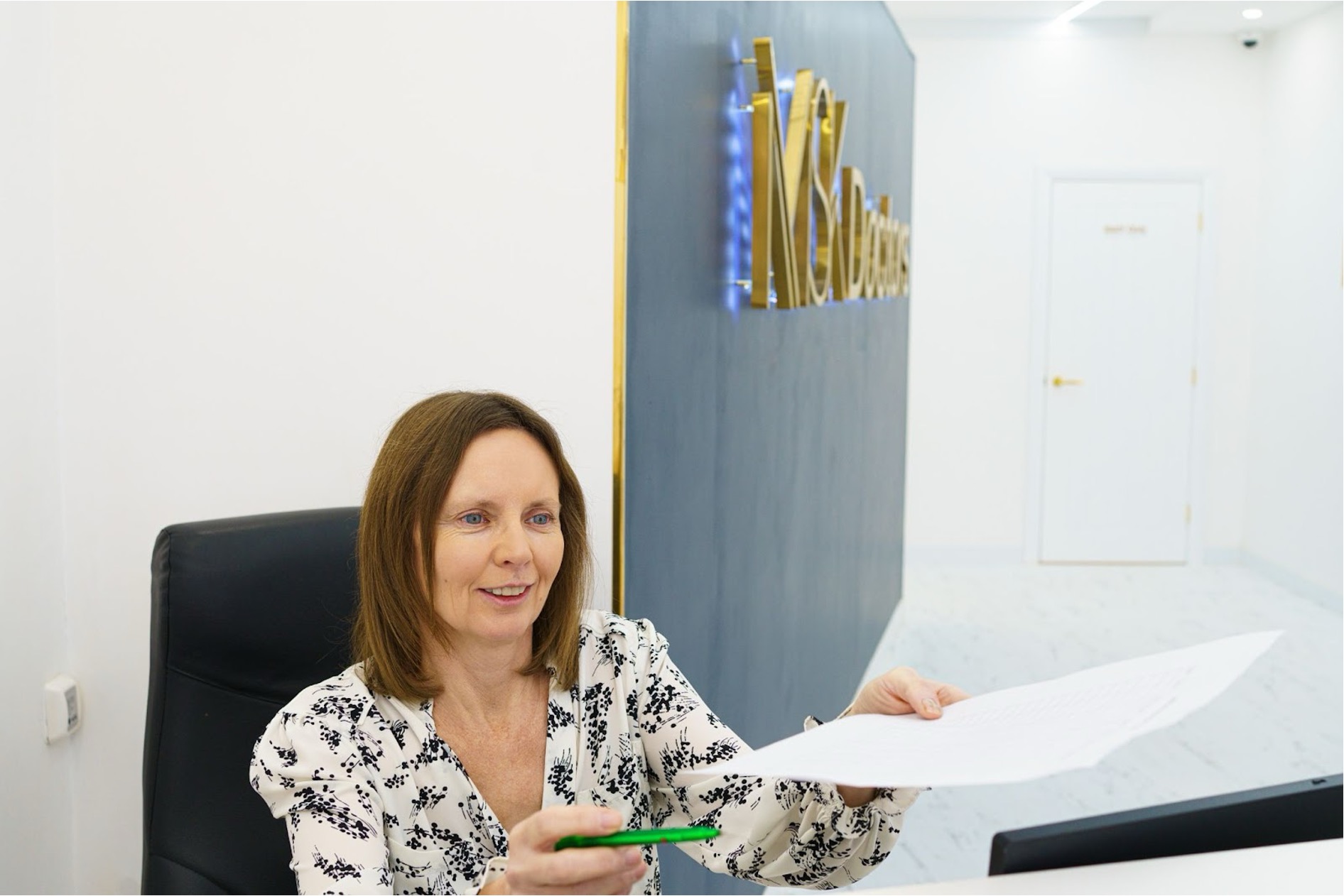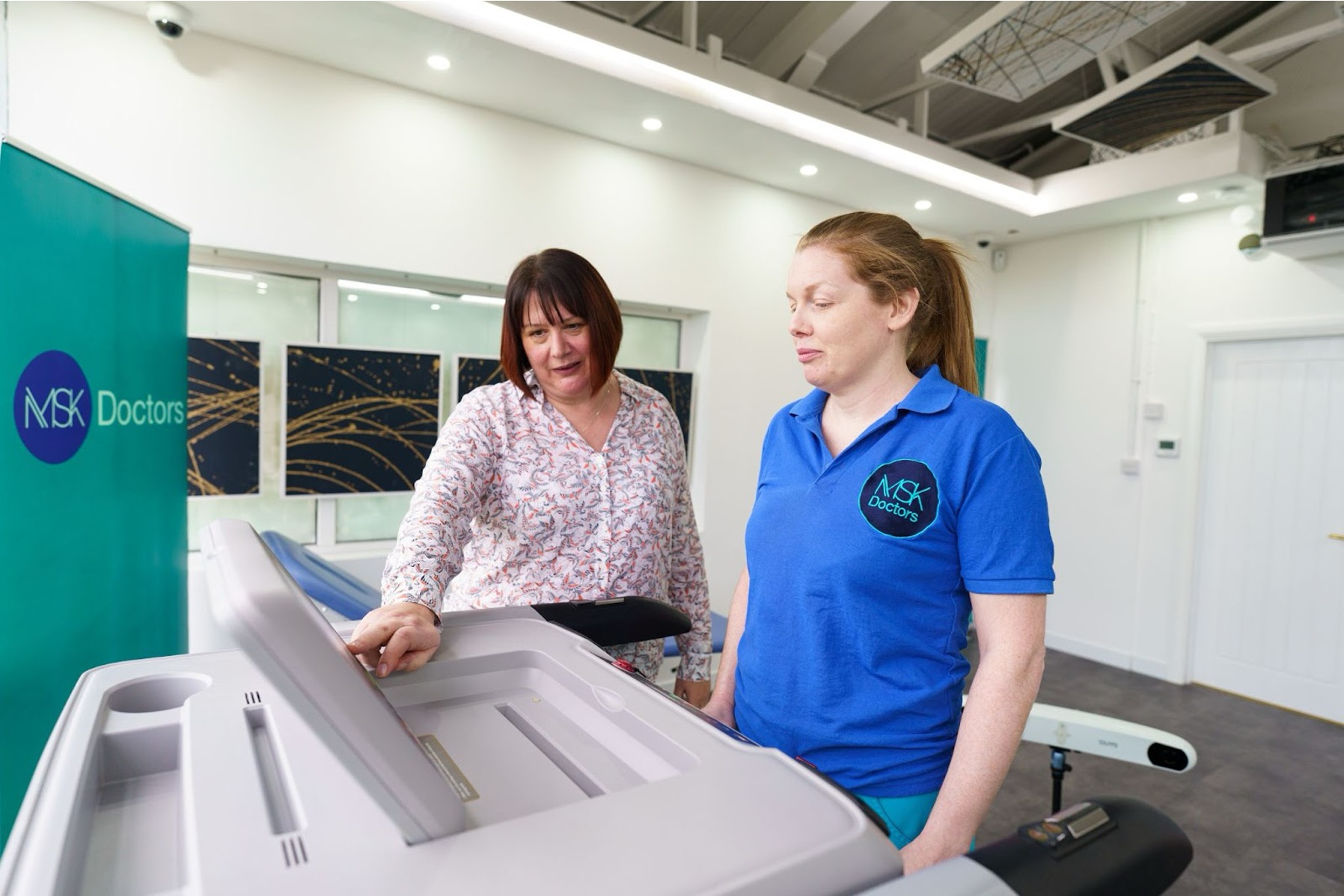Collarbone Pain: Symptoms, Causes, Treatment & Exercises
:format(webp)/cdn.mskdoctors.com/storage/2025/3/hvFrT4I8qOnDHIQM15xgATeBbbSiUmDD.jpg)
Key Takeaways
-
Collarbone pain can come from several conditions, including breaks, joint injuries, and arthritis.
-
Different age groups experience collarbone pain differently - older adults often from falls and younger people from sports injuries.
-
Early diagnosis and proper treatment are important to prevent long-term problems and restore movement.
-
Range of motion and strengthening exercises play a key role in recovery.
-
MSK Doctors provides personalised, expert care for collarbone pain with advanced motion analysis technology and a team of musculoskeletal specialists.
Understanding Collarbone Anatomy and Pain
Your collarbone, also known as the clavicle, is a remarkable yet often overlooked part of the human body. This slender, slightly S-shaped bone plays a crucial role in connecting your breastbone to your shoulder, framing your chest and supporting your neck and arms.
While it might seem delicate, the collarbone is central to upper body movement and can become a significant source of pain and discomfort when injured or affected by various conditions.
Medical professionals recognise that collarbone pain can stem from multiple sources, each with its own set of challenges and treatment strategies. The key to effective management lies in accurate diagnosis and a personalised treatment plan.
Anatomy and Basic Structure
The collarbone has two main connections in your body. At one end, it connects to the breastbone, creating the sternoclavicular joint. At the other end, it joins with the shoulder blade, forming the acromioclavicular joint.
These connections allow your shoulder to move in multiple directions, helping you lift your arm, reach overhead, and perform various daily activities.
Located just beneath the skin, it's one of the most visible bones in the human body. This unique position makes the collarbone both important for movement and vulnerable to injury.
|
Recognizing Symptoms of Collarbone Pain
The most noticeable symptom of collarbone issues is pain directly over the affected area. This pain often intensifies with shoulder or arm movements and may radiate to the neck, shoulder, or upper chest. Many people report tenderness when touching the area and experience difficulty raising their arm above shoulder level.
You also might notice swelling around the collarbone, and in the case of fractures, there may be visible deformity or a bump along the bone. Bruising or discoloration commonly appears over the affected area, particularly after an injury.
Movement limitations are another telltale sign of collarbone issues. These include discomfort when reaching across the body, pain when carrying objects, and a general reduction in shoulder mobility. Some people also experience grinding or popping sensations during movement, along with a feeling of instability in the shoulder joint.
Primary Causes of Collarbone Pain
Fractures
Collarbone fractures are the most frequent source of pain, affecting approximately one in 1,000 people annually. These breaks account for about 10% of all bone injuries and occur differently across age groups. Older adults typically experience fractures from falls, while teens and young adults often sustain injuries during sports activities.
Joint Injuries
Joint injuries can occur at the acromioclavicular (AC) or sternoclavicular (SC) joints, creating a sense of instability and significant discomfort. People frequently experience weakness and noticeable swelling in the affected area.
Osteoarthritis
Osteoarthritis is a progressive condition that slowly breaks down joint cartilage. This degenerative process leads to increasing pain, stiffness, and reduced range of motion, particularly affecting the AC joint. Unlike sudden injuries, osteoarthritis develops subtly over time, with symptoms gradually becoming more pronounced.
Thoracic Outlet Syndrome
Thoracic Outlet Syndrome represents a more intricate cause of collarbone pain. This condition occurs when nerves and blood vessels become compressed between the collarbone and first rib. This condition presents a unique combination of symptoms, including pain, tingling, and muscle weakness. Risk factors are diverse, ranging from poor posture and previous injuries to obesity and muscle imbalances.
Bone Infections
Though rare, bone infections can cause significant collarbone pain. Medically known as osteomyelitis, these infections are more likely to occur in individuals with compromised immune systems, diabetes, or a history of previous bone trauma. While uncommon, they represent a serious condition that requires immediate medical attention.
Treatment Strategies

Managing collarbone pain requires a combination of medication, physical therapy, and lifestyle adjustments for lasting relief.
Initial Management
When collarbone pain strikes, the initial approach focuses on immediate relief and preventing further injury. Rest is important, but this doesn't mean complete immobilisation. You should carefully limit movements that cause pain. Applying ice can significantly reduce inflammation and provide pain relief. Alternating between ice and gentle heat can be particularly effective in managing discomfort.
Pain Management Techniques
Nonsteroidal anti-inflammatory drugs like ibuprofen can help reduce both pain and inflammation. For more severe pain, stronger pain management options that target specific types of discomfort may be prescribed.
Medical Interventions
Fractures require a methodical approach that involves carefully immobilising the area with a sling or brace, closely monitoring the healing process, and gradually reintroducing movement.
Joint injuries demand an even more nuanced treatment strategy. Corticosteroid injections may be recommended to reduce inflammation, followed by targeted physical therapy and specialised rehabilitation programs designed to restore full functionality.
Advanced Treatment Options
Prolotherapy has emerged as a cutting-edge treatment, involving injectable solutions that stimulate the body's natural healing processes. This approach can be particularly effective for chronic pain conditions that haven't responded to traditional treatments, offering hope to those who have struggled with ongoing discomfort.
Exercises for Collarbone Pain Relief
Early Stage Gentle Movements
The pendulum swing is an excellent starting exercise. Lean forward slightly, allowing the affected arm to hang down freely. Making small, controlled circular movements helps maintain joint mobility and reduces stiffness. The wall crawl is another helpful early-stage exercise where individuals use their fingers to slowly walk their hand up a wall, carefully extending their reach without causing pain.
Range of Motion Techniques
Shoulder rotations performed slowly and carefully can help restore flexibility. These involve gently rotating the shoulder in circular motions, first clockwise and then counterclockwise. Arm circles, performed with minimal resistance, can also help improve joint mobility and reduce stiffness.
Strengthening Exercises
Shoulder blade squeezes are an excellent starting point. This exercise involves pulling the shoulder blades together as if trying to hold a piece of paper between them. This helps restore muscle strength and improves overall posture.
External rotation exercises using light resistance bands can help rebuild strength in the rotator cuff muscles. These muscles are critical for shoulder stability and proper arm movement. Begin with very light resistance and minimal repetitions, gradually increasing as strength improves.
Progressive Training Approach
Start with minimal resistance and few repetitions, carefully monitoring pain levels. A physical therapist can design a personalised program that considers the specific type and severity of the collarbone condition.
Professional Guidance
Working with a physical therapist or healthcare professional ensures that the rehabilitation program is designed for specific healing stages, individual conditions, and personal health goals. They can provide real-time feedback, modify exercises as needed, and help prevent potential complications.
Why Choose MSK Doctors for Your Collarbone Pain Treatment

MSK Doctors offers expert diagnosis and cutting-edge treatments to address collarbone pain effectively.
At MSK Doctors, we recognise that collarbone pain is more than a medical condition—it's a personal journey that impacts every aspect of your daily life. Our commitment goes beyond treating symptoms; we focus on understanding the unique circumstances of each individual and providing comprehensive, compassionate care through our network of highly skilled musculoskeletal specialists.
A Different Approach to Healing
We combine cutting-edge motion analysis technology with advanced medical diagnostic techniques and personalised treatment plans to address the root causes of collarbone pain. Our multidisciplinary team - comprising orthopaedic surgeons, sports medicine doctors, and specialists with expertise in musculoskeletal medicine - works together to ensure you receive the most effective, targeted care possible.
Your Partner in Recovery

personalised rehabilitation plans ensure a smooth recovery from collarbone injuries, improving mobility and reducing discomfort.
We believe that true healing is a collaborative process. Our team doesn't just treat your condition; we empower you with knowledge, support, and the tools necessary to prevent future injuries and maintain optimal musculoskeletal health.
With our comprehensive resources, downloadable exercise guides, and patient-centric approach, we support you every step of the way in your recovery journey.
Don't let collarbone pain hold you back - book your expert consultation with MSK Doctors today!
Frequently Asked Questions (FAQ)
What are the most common causes of collarbone pain?
Collarbone pain can result from fractures, joint injuries, osteoarthritis, Thoracic Outlet Syndrome, and rarely, bone infections.
How do I know if my collarbone pain is serious?
Seek medical attention if you experience severe persistent pain, significant swelling, inability to move your arm, signs of infection, or visible deformity.
Can exercises help with collarbone pain?
Yes, gentle range of motion and strengthening exercises can help rehabilitate the collarbone and surrounding muscles, but always consult a healthcare professional first.
How long does collarbone pain typically take to heal?
Healing time varies depending on the cause and severity, ranging from a few weeks for minor injuries to several months for more complex conditions.
Why should I choose MSK Doctors for my collarbone pain treatment?
MSK Doctors offers specialised, comprehensive care with a multidisciplinary team of experts, cutting-edge motion analysis technology, personalised treatment plans, and a patient-centric approach to musculoskeletal health.
:format(webp)/cdn.mskdoctors.com/storage/2025/5/J26J2SuguZTzYNmqcI1EFk6a2wJsUF4a.jpg)
:format(webp)/cdn.mskdoctors.com/storage/2025/5/C4LMXVp2sVqlw6pSc34aXpbl7ZEFTXUS.jpg)
:format(webp)/cdn.mskdoctors.com/storage/2025/5/bw1n5g4TOi1bV0zp4XKGPhlwGyJTkG1v.jpg)
